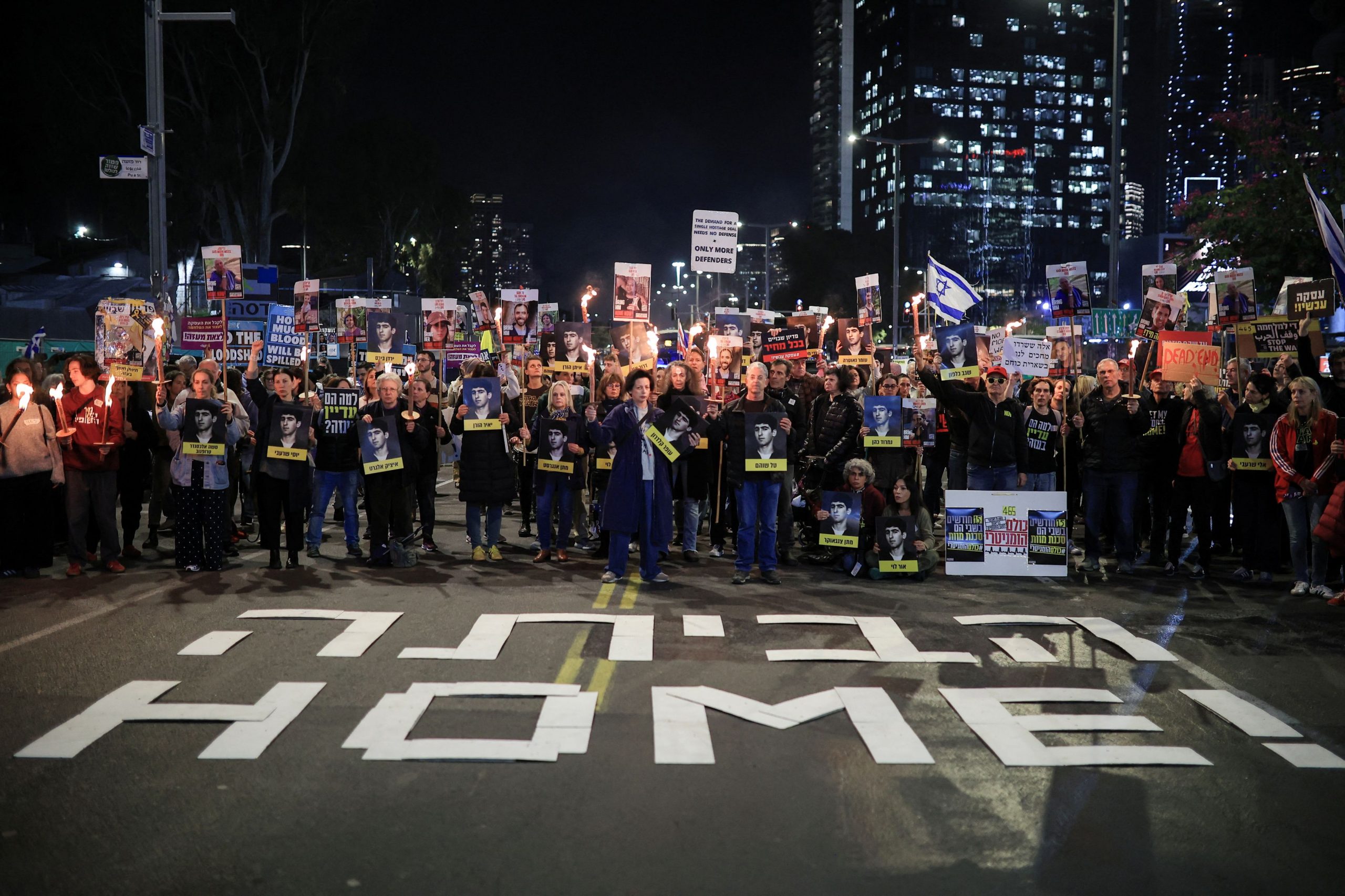Israel and Hamas agreed to a deal to pause their fighting in the Gaza Strip, Arab mediators said, opening a pathway to end a 15-month war that has laid waste to the enclave, threatened to spark a regional conflict, and roiled politics in the West.
The deal will be implemented in phases, beginning with an exchange of some of the hostages held in Gaza for Palestinian prisoners in Israeli jails and moving on to talks over a broader end to the fighting.
Those latter talks will likely be contentious, as Israel and Hamas remain at odds over whether there should be a permanent halt to the fighting. But the two sides have agreed to look past those differences to close a deal now.
The terms of the agreement aren’t substantially different from those that were available months ago when more Israeli hostages remained alive. But several factors have pushed the parties closer recently.
Hamas has been battered and isolated by Israeli attacks that took out much of its leadership and cowed its Lebanese ally, Hezbollah, and major backer Iran. Israeli Prime Minister Benjamin Netanyahu, meanwhile, has solidified his governing coalition, reducing the leverage of right-wing parties who have opposed any deal, and has been emboldened by Israel’s wins on the battlefield.
And both sides have been galvanized by President-elect Donald Trump’s imminent return to office. The incoming president said a week ago that “all hell will break out in the Middle East” if the hostages aren’t released by the time he is inaugurated on Jan. 20, repeating a threat he had made earlier. He hasn’t explained what he means, but said last week it wouldn’t be good for Hamas or “frankly, for anyone.”
Negotiators—including Steve Witkoff, Trump’s designated Middle East envoy, along with officials from the U.S., Israel and Arab countries—reconvened at midday local time in Doha, Qatar, to finalize the draft, said Arab officials who are helping mediate the talks.
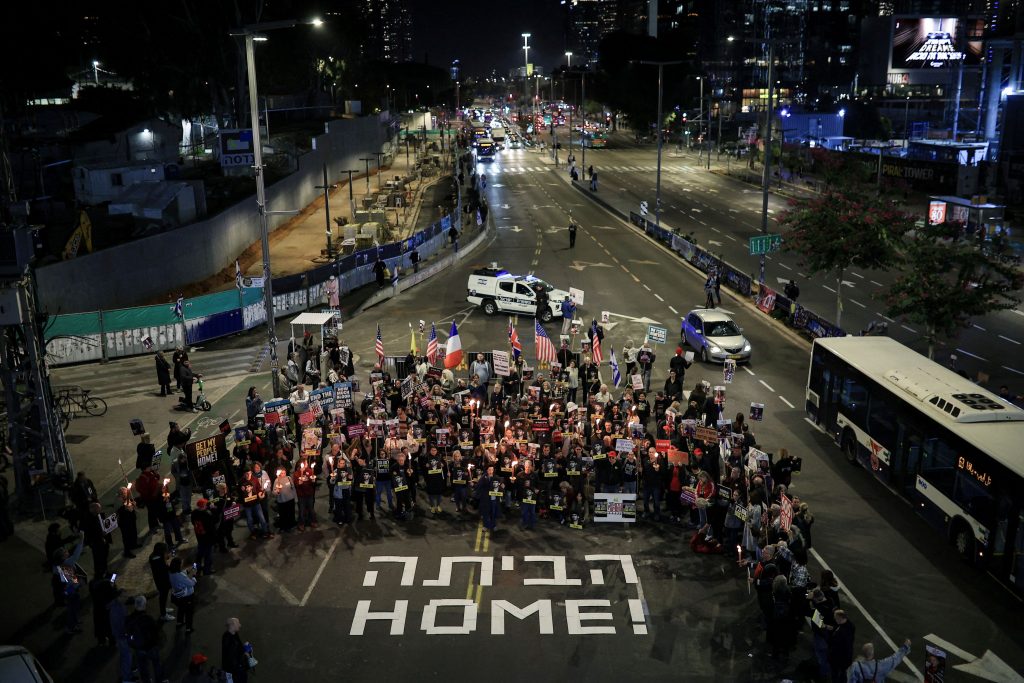
Supporters of Israeli hostages, kidnapped during the deadly October 7 2023 attack by Hamas, block a road as they demand a deal during a protest amid ongoing negotiations for a ceasefire in Gaza, in Tel Aviv, Israel January 13, 2025. REUTERS/Itai Ron.
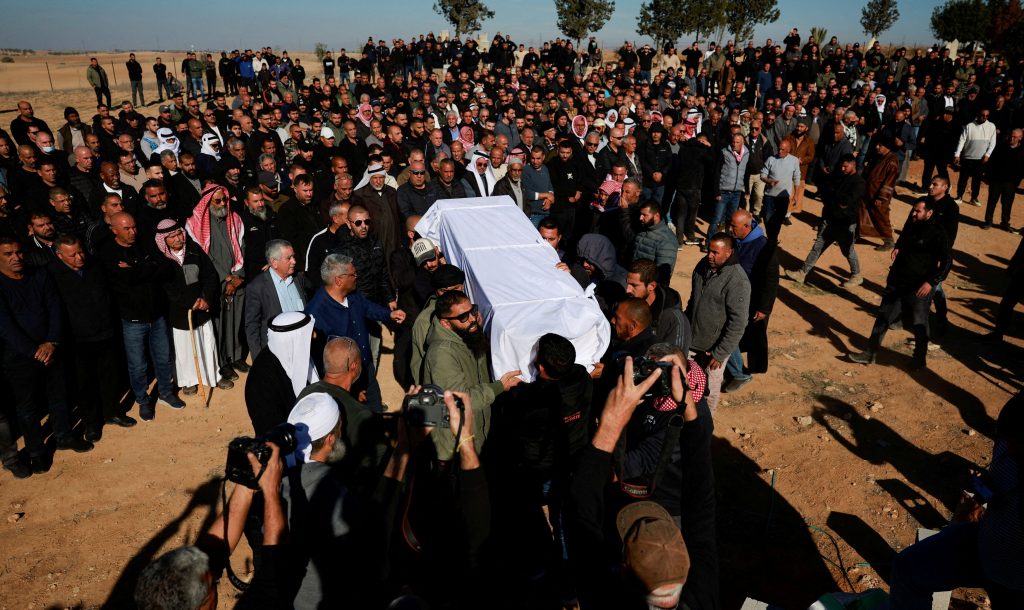
Mourners carry the body of Youssef Ziyadne, a Bedouin Israeli who was taken hostage during the deadly October 7 attack by Hamas, and whose body, according to Israel’s military was found in a Gazan tunnel and brought to Israel, at his funeral in Rahat, southern Israel, January 9, 2025. REUTERS/Ammar Awad
The first stage of the deal would pause the fighting in Gaza and allow for the release of some Palestinian prisoners held in Israel in exchange for the release of 33 hostages being held in Gaza. The hostages to be released would include women, children, people with severe injuries and those above the age of 50, according to a draft seen by The Wall Street Journal. Hamas would also hand over dead bodies.
The real test for the cease-fire could come after the first 16 days, when the parties will begin debating whether to extend the pause into a permanent halt to the fighting over the second and third stages of the deal. These stages would also include the release of all the hostages and eventually a plan to rebuild Gaza.
Previous talks have been undermined by a fundamental disagreement: Israel has wanted to get its hostages back and then continue the war, while Hamas has been loath to release captives without ending the conflict.
Hamas accepted verbal guarantees from the U.S., Qatar, Egypt and Turkey that Israel would continue negotiations for a permanent cease-fire after the expiration of the first phase of the deal, Arab mediators said.
The Israeli and Hamas teams were at the same location but not in the same room, the Arab officials said, adding that messages were being exchanged via the mediators. Palestinian Islamic Jihad, another militant group in Gaza that is also holding some hostages, joined the talks on Wednesday, the officials added.
Israel still doesn’t know how many of the 33 hostages meant to be released in the first stage of the deal are dead, but believes the majority are still alive, Israeli officials said. This means Israel can’t yet say how many Palestinian prisoners will be released because Hamas is asking for more to be released in exchange for living than dead hostages, the officials added.
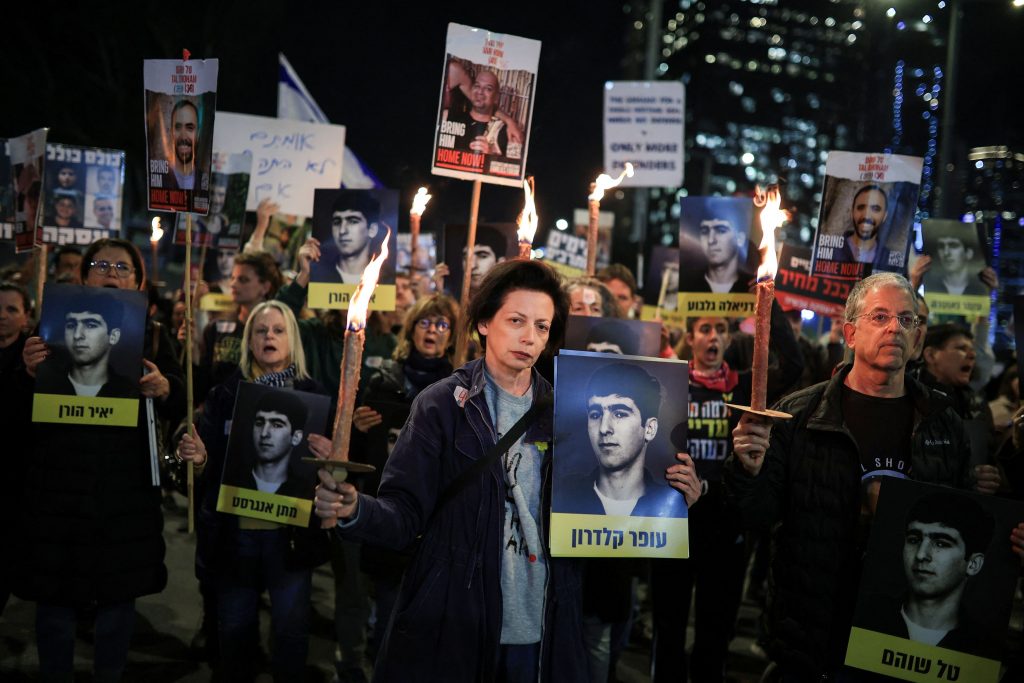
Supporters of Israeli hostages, kidnapped during the deadly October 7 2023 attack by Hamas, hold pictures of hostages and of Ron Arad, an Israeli air force navigator missing since he bailed out over Lebanon in 1986, as they demand a deal during a protest amid ongoing negotiations for a ceasefire in Gaza, in Tel Aviv, Israel January 13, 2025. REUTERS/Itai Ron.
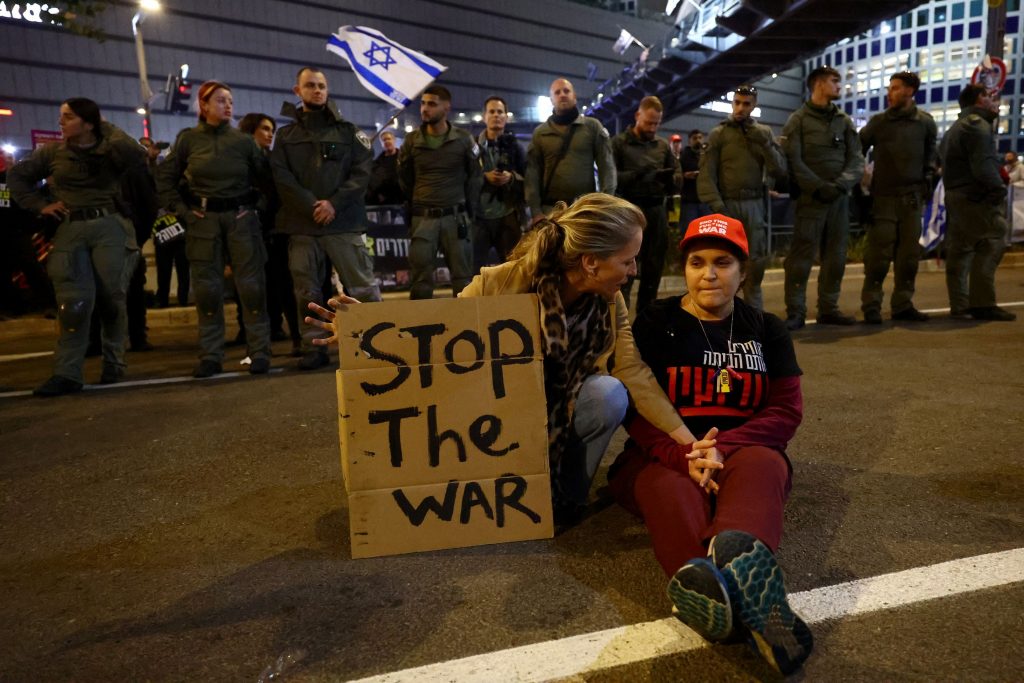
People sit on the ground during a protest against the government and to show support for the hostages who were kidnapped during the deadly October 7, 2023 attack, amid the ongoing conflict in Gaza between Israel and Hamas, in Tel Aviv, Israel January 11, 2025. REUTERS/Kai Pfaffenbach
The release of hostages is expected to be spread out over several weeks at least, the mediators said.
Israeli hospitals and medical teams are preparing to receive the hostages to be released in the deal, many of whom are believed to be in bad condition due to lack of food and hygiene, mistreatment by captors and the risk of Israeli airstrikes.
Far-right members of Israeli Prime Minister Benjamin Netanyahu’s government have publicly denounced the deal, which they say will end Israel’s war in Gaza without uprooting Hamas. But in recent days Netanyahu has made headway toward shoring up support for the deal within his government, even without far-right votes, according to people familiar with the matter.
Netanyahu met Tuesday with families of hostages who have long accused him of failing to give priority to the release of their relatives. Many families are worried about relatives who aren’t included in the first humanitarian stage of the agreement.
The Israeli public increasingly supports the deal, with 60% saying they believed Israel achieved its military objectives in Gaza and should focus on diplomatic efforts to release the hostages, according to a survey this week by Agam Labs at the Hebrew University of Jerusalem.
The fighting in Gaza was triggered by the Hamas-led Oct. 7, 2023, attack on southern Israel, which left around 1,200 dead and some 250 people taken hostage. More than 46,000 people have been killed in Gaza, according to Palestinian health authorities, who don’t say how many were combatants.
Both Israel and Hamas also seem galvanized by the prospect of Trump’s return to office. The incoming president said a week ago that “all hell will break out in the Middle East” if the hostages aren’t released by the time he takes office on Jan. 20, repeating a threat he had made earlier. He hasn’t explained what he means, but said last week it wouldn’t be good for Hamas or “frankly, for anyone.”
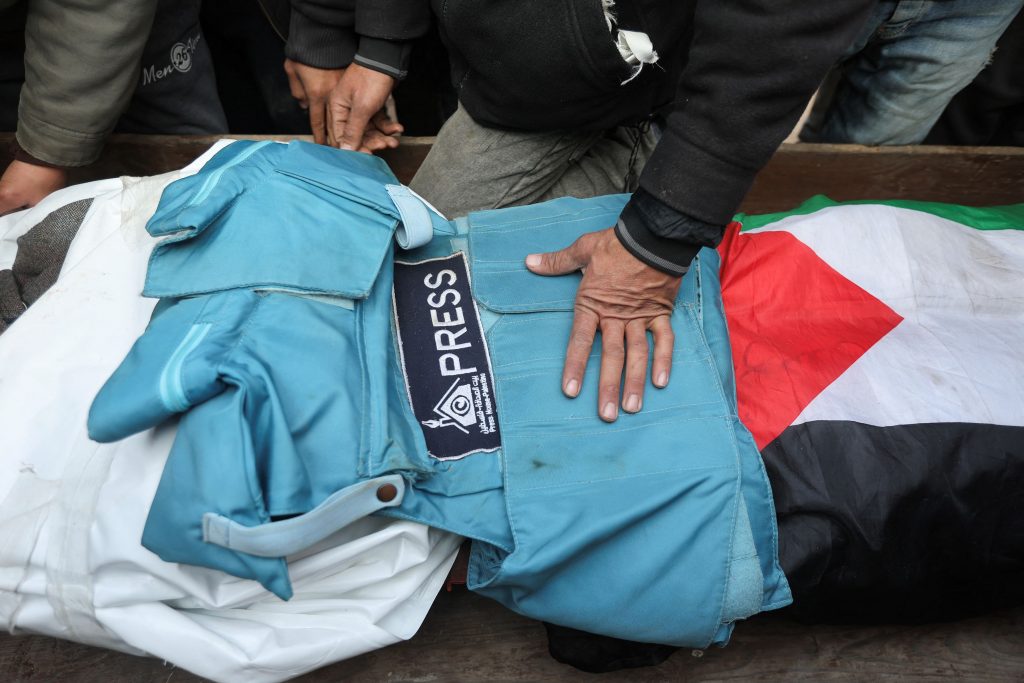
A mourner touches the body of Palestinian Saed Nabhan, an Al-Ghad TV journalist who was killed by Israeli fire while covering an incident at the Nuseirat refugee camp, according to medics, during his funeral in Nuseirat, central Gaza Strip, January 11, 2025. REUTERS/Ramadan Abed
Steve Witkoff , President-elect Donald Trump ’s designated Middle East envoy, has been in the region for talks, including for a meeting in Israel with Netanyahu. An Israeli official said Witkoff has been working well with President Biden’s top Middle East adviser, Brett McGurk .
Israel says 94 hostages taken on Oct. 7, 2023, remain in Gaza, most of them Israeli. They include dual nationals and more than 30 hostages who Israel has concluded are no longer alive, based on intelligence findings, but Israeli and U.S. officials privately believe the number of dead is much higher. Four additional hostages, taken before the Hamas-led attack, bring the total to 98.
As part of the proposed agreement, Israeli forces would remain in some parts of Gaza when the fighting stops but would eventually withdraw from the corridor along Gaza’s border with Egypt and another that bisects the Gaza Strip. Hamas agreed to put off resolving some differences with Israel to the second phase of the deal, including over the buffer zones Israel wants to maintain along the eastern and northern edges of Gaza, Arab mediators said.
The militant group also agreed that Palestinians released from long jail terms would leave the Palestinian territories and live in exile abroad with their families.
Write to Summer Said at summer.said@wsj.com
